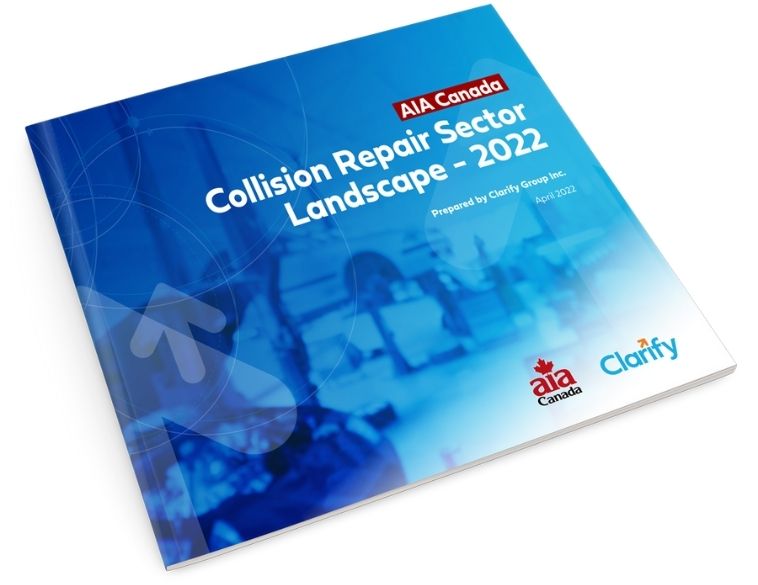AIA Canada has just released a study report, Collision Repair Sector Landscape – 2022, which outlines the key pressures facing the industry today.
This report prepared by Clarify Group establishes the number of body shops in Canada at 6390, of which only 28.4% are under banner for a total revenue estimated in 2021 at 6.8 billion dollars. Quebec has 1671 of them. The study highlights that the collision repair industry, like the entire automotive aftermarket service sector, is facing a significant technological challenge that prioritizes symbiotic relationships between shops, automakers and their dealers. The ties holding this collaboration together will only grow stronger, the report predicts.
Another observation is that the body shop industry depends on relationships with insurance companies on which much, if not all, of the shops’ income depends. The downward trend in the number of collisions is partially offset by an increase in repair costs. The pandemic has blurred the lines and the sector has not regained the cruising speed it had before this fortuitous phenomenon. But, according to AIA Canada, the increase in kilometers driven may signal that the worst is over for companies in the sector.
With the exception of British Columbia, Alberta and Saskatchewan, all provinces are tied to private insurers. What this report finds is that the multitude of repair programs from these insurers creates complexity for body shops. In this regard, AIA advocates a standardization of insurance company policies and practices.
The technology
The last five years have seen an acceleration in automotive technologies. In addition to new materials, workshops have had to adapt to the rapid digitalization of the vehicles in their care, including advanced driver assistance systems. This explains why many shops will return the vehicle to the dealership to perform final calibrations before handing it over to the customer.
The same applies to electric and hybrid vehicles, which require a new approach that body shops do not have much time to adapt to.
Given this technological advancement, AIA is not surprised that body shop certification is no longer limited to luxury brands. The pressure on workshops to obtain one or more manufacturer certifications in order to repair vehicles is not likely to ease. The high cost of the tools and training required for these certifications explains the trend towards specialization.
AIA Canada concludes that body shop consolidation will continue as will the value of the investments required to keep up. Manufacturers’ certifications will also continue to grow. And the lack of revenue growth offered by insurers does not meet current shop needs.
In light of these findings, AIA Canada believes that the body shops that will thrive in today’s environment will be those that invest in training and attracting new human resources, are able to meet OEM standards, and create regional alliances with dealers and specialty service providers while engaging with the broader regulatory bodies to prepare for their future.
The full report is available at aiacanada.com.



